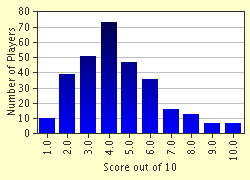Quiz Answer Key and Fun Facts
1. Following Manitoba's entrance into Confederation in 1870, the Métis population soon began to be outnumbered by the influx of white settlers from the east. Facing ostracism, many Métis began to move further west. The bulk of them settled in and near this village. What was its name?
2. In the early 1880's, the Canadian government once again sent surveyors west to prepare for increased settlement. And, once again, the Métis began to fear for their way of life. The Métis leadership decided on a course of action. Who was the leader of the Métis at the time?
3. Having decided on a course of resistance against the Canadian incursions, the Métis leader sent a delegation to ask Louis Riel to join them. They wanted Riel to be the voice of the Métis in talks with the Canadian government. Where did they have to go to find him?
4. The Canadian government ignored the Métis' concerns and demands, and on March 19th Riel and the Métis formed the Provisional Government of Saskatchewan. They followed this up by demanding that the North-West Mounted Police surrender this fort to them.
5. The first skirmish of the conflict occurred on March 26th at the store at Duck Lake. The Métis force was going to appropriate blankets and supplies from the depot and inadvertently encountered the North-West Mounted Police at the location. Talks were attempted, but a struggle for a gun ensued. The skirmish ended with the Métis being routed.
6. Following the events of Duck Lake, the Canadian government mobilized a number of militia units, forming the Northwest Field Force. Within two weeks, three columns were in motion, heading to the region. At the same time as the Métis began their resistance, the Natives in the area were also having problems with the government and Treaty No. 6. After hearing of Duck Lake, they thought to use the unrest to their advantage. On March 30th, Chief Poundmaker of the Cree held Fort Battleford under siege. What was Chief Poundmaker's native name?
7. Another native band, led by Chief Big Bear, also became involved in the conflict. The difference with this band was that a splinter group led by Chief Big Bear's son Ayimisis and the band's war chief Kapapamahchakwew (Wandering Spirit) engaged in conflicts without Chief Big Bear's support. Which of the following skirmishes did NOT involve this group of warriors?
8. Lieutenant-Colonel William Otter led one of the columns (approximately 350 men) against Chief Poundmaker's forces at Fort Battleford. When they arrived there, however, they found that Poundmaker's force had relocated elsewhere. Otter elected to follow the natives and attack them in the early hours of the morning, hoping to catch them off guard. Expecting a small force numbering no more than 200 men, Otter attacked at Cut Knife Hill. Unexpectedly, Poundmaker's numbers were somewhat higher. Approximately how large was Chief Poundmaker's force?
9. The column led by Lieutenant-General Middleton weathered an ambush by Dumont's Métis on the 24th of April, and continued to advance until broaching the Métis stronghold of Batoche. The Battle of Batoche lasted three days beginning on May 9th and ending on May 12th. Louis Riel was captured at the conclusion of the battle.
10. On July 6th, Louis Riel was formally charged with High Treason. His trial lasted from July 20th to August 1st, after which he was sentenced to hang. A number of appeals were attempted, to no avail. On this date, Louis Riel was hanged.
Source: Author
reedy
This quiz was reviewed by FunTrivia editor
bloomsby before going online.
Any errors found in FunTrivia content are routinely corrected through our feedback system.

